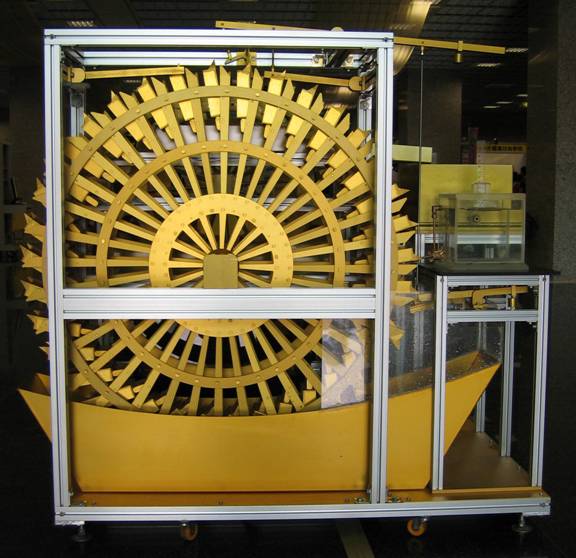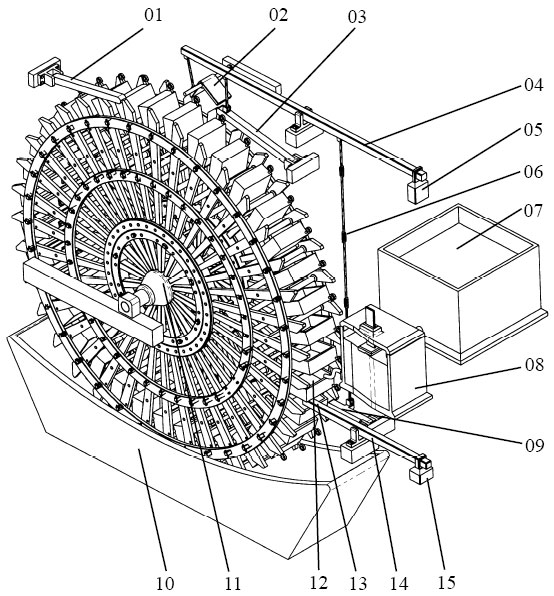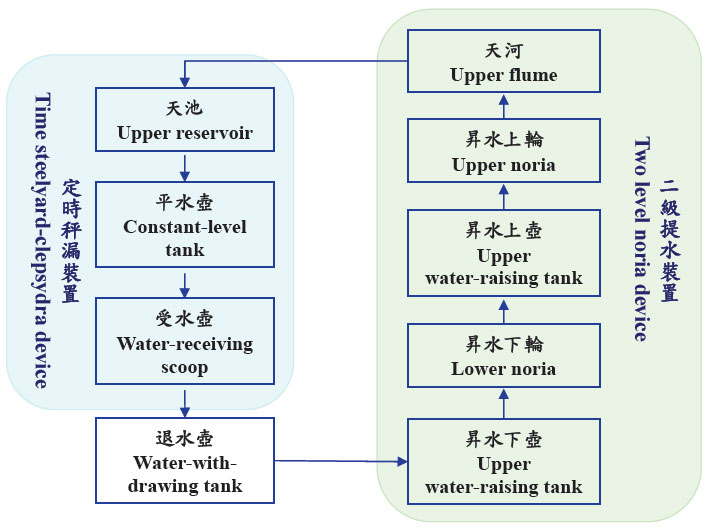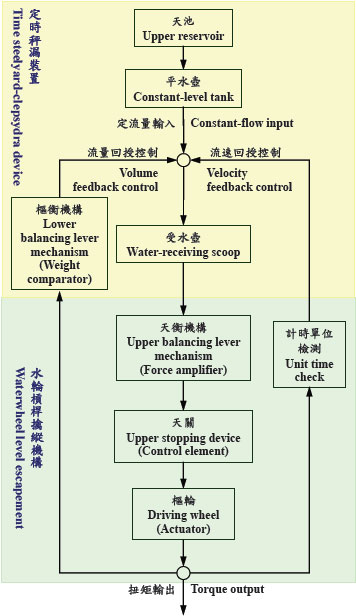The waterwheel steelyard-clepsydra device
The escapement regulator, which applied mechanical principles to equally divide time period, is regarded as one of the most important inventions in Europe in terms of modern machine history.

However, according to literature research, the escapement regulators used in mechanical clocks were first invented in ancient China. Basically, the ancient Chinese escapement regulator was a waterwheel steelyard-clepsydra device.

This waterwheel steelyard-clepsydra device (Fig.1) was built by Dr. Lin Tsung-Yi (Department of Mechanical Engineering, STUT) according to the escapement regulator of Shui Yun Yi Xiang Tai, which was decumented in Su Song’s “Xin Yi Xiang Fa Tao”.

Fig. 1 The waterwheel steelyard-clepsydra device of Su Song’s clock tower
Shui Yun Yi Xiang Tai (Water-Powered Armillary Sphere and Celestial Globe, a astronomical clock tower) reflected Ancient Chinese achievements in both astronomy and mechanics during the 11th century. It was built by Su Song and Han Gong-Lian during 1,086~1,092 AD of the Northern Song Dynasty. It integrated three working systems included the armillary sphere, the celestial globe, and the time-telling system. Fig. 3 is the water-transport system of Su Song’s clock tower. This was the highest achievement of the development of astronomical clock in ancient China.

Fig. 3 The water-transport system of Su Song’s clock tower
The waterwheel steelyard-clepsydra mechanism of Su Song's clock tower was a unique feature of the ancient Chinese escapement regulators, which was made up of the time steelyard-clepsydra device and the waterwheel lever escapement.

Fig. 4 The kinematic model of the waterwheel steelyard-clepsydra device
The time steelyard-clepsydra device used the repetitive accumulation and periodic release of energy to regulate water flow in the two-level float clepsydra. The periodic swing of the steelyard clepsydra was thus under control to enable the waterwheel lever escapement to maintain a regular and accurate intermittent motion and to further achieve accurate time-keeping.